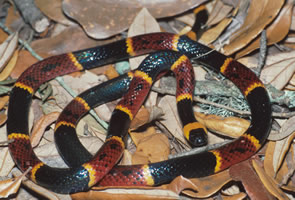
Eastern Coral Snake
Micrurus fulvius
VENOMOUS
Photo by RW VanDevender
Description: Coral snakes are rather slender snakes distinguished by a body with red, yellow, and black rings. The head of this species is rather indistinct from the neck, and the snout is blunt compared to most other snakes. In the United States, one can distinguish a venomous coral snake from nonvenomous mimics, the scarlet kingsnake and the scarlet snake, because coral snakes have yellow bands adjacent to their red bands. An old poem is a helpful reminder: “Red and black, friend of Jack; red and yellow, kill a fellow.” In addition, scarlet kingsnakes and scarlet snakes have red snouts, whereas the snout of a coral snake is black.
Feeding/diet: Coral snakes have small, immoveable fangs in the front of their mouths that they use to kill their prey, usually small snakes and lizards.
Habitat/range: Coral snakes live in sandy areas and stay underground most of the time. Coral snakes are extremely rare in North Carolina and are considered endangered by the state.
Miscellaneous: Coral snakes are members of the family Elapidae, which includes the cobras and mambas. When the eastern coral snake bites, it usually holds tightly while the venom takes effect. Generally, people get bitten by coral snakes while attempting to pick one up. Though they often chew when they bite, they don’t have to chew to inject their venom. Coral snake venom attacks the central nervous system, and death, if it occurs, is usually the result of respiratory failure.
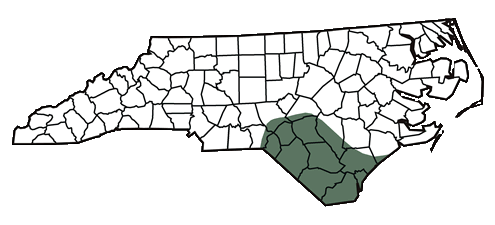
The shaded region represents the range of the eastern coral snake in North Carolina.
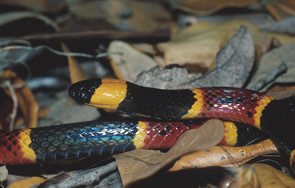
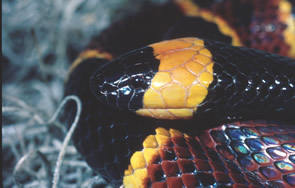
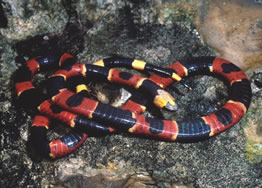
Adjoining red and yellow bands distinguish this snake from nonvenomous mimics.
Photo by RW VanDevender
Coral snakes always have a black snout.
Photo by RW VanDevender
Photo by RW VanDevender
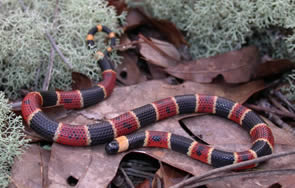
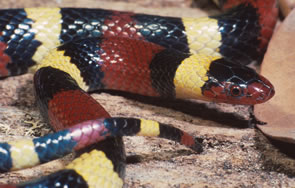
Photo by RW VanDevender
This website created by: J. Willson, Y. Kornilev, W. Anderson, G. Connette and E. Eskew.
For comments or questions contact M. Dorcas: midorcas@davidson.edu.
M. Dorcas homepage: http://bio.davidson.edu/dorcas
Davidson College, Davidson, North Carolina 28035-1719.
Text and maps from: Dorcas, M. E. 2004. A Guide to the Snakes of North Carolina. Davidson College - Herpetology Laboratory, Davidson, NC. – Copyright by Michael E. Dorcas.
Partial Funding for this website provided by a Associate Colleges of the South, National Science Foundation, and Duke Energy.
